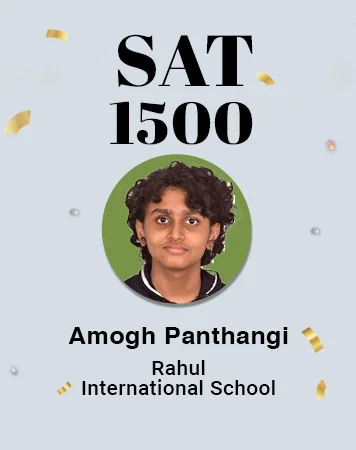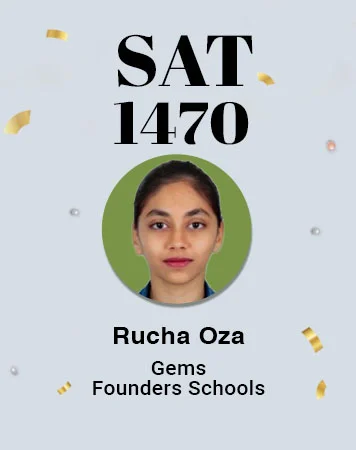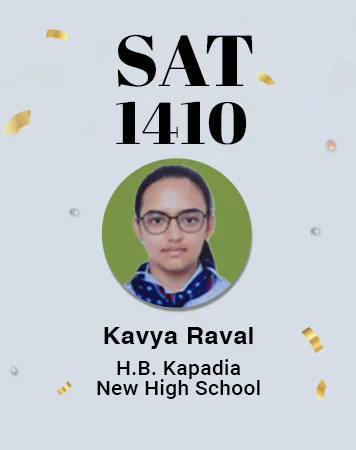The Digital SAT Preparation
The SAT prep is an entrance test for students seeking admission to undergraduate programs abroad, especially in the US, Canada, and Singapore. Many universities in India also accept SAT scores.
Get in Touch
Call us on: +91 9167255434
OR
Fill in the details to get personalized advice from our experts!
We are the official coaching partner of premier schools across cities, such as Mumbai, Pune, Lonavala, Bangalore and Guwahati in India for PSAT® and SAT®.
CHOOSE THE SAT TEST PREP PROGRAM THAT SUITS YOU BEST
Customised SAT Exam Preparation Plans for Flexible, Adaptable Learning.
4 REASONS WHY THE BEST STUDENTS CHOOSE INSPIRUS FOR THEIR SAT PREP

Individiual Attention
With small batches and interactive teachers, we ensure each student gets the attention they require to elevate their score to 1500+.

Customised Learning Programs
Your learning plan is personalised based on the result of the diagnostic test that you take at the beginning of the SAT prep program.

Exhaustive Study Material
With lectures, books, PPTs, practice modules, and sectional and full-length tests, our study material will ensure you’ve gained mastery over every SAT topic.

Full-Length SAT Mock Tests
Apart from the initial diagnostic test, you will also get to test yourself with 10 full-length adaptive SAT mock tests to give you the best chance at a 1500+ score in the actual SAT.
OUR RECENT HIGH SCORES
| Name of the Student | School | City | Score |
|---|---|---|---|
| Aarushi Mathur | R. N. Podar School | Mumbai | 1570 |
| Tanmay Shinde | Smt. Sulochanadevi Singhania School | Mumbai | 1570 |
| Rishan Bheda | Aditya Birla World Academy | Mumbai | 1570 |
| Rushil Mathur | Rahul International School | Mumbai | 1560 |
| Niyoshi Parekh | Dhirubhai Ambani International School | Mumbai | 1560 |
| Richik Pal | Lilavatibai Podar High School | Mumbai | 1560 |
| Roshni Rangwani | BillaBong High International School | Mumbai | 1560 |
| Suyash Jaju | Mumbai | 1550 | |
| Aarav Mukhtyar | Prabhavati Padamshi International Junior College | Mumbai | 1540 |
| Juhi Jotani | Smt. Sulochanadevi Singhania School | Mumbai | 1540 |
| Preet Modi | Smt. Sulochanadevi Singhania School | Mumbai | 1540 |
| Wynnona Fernandes | St. Xaviers College | Mumbai | 1540 |
| Youg Sanghvi | Dhirubhai Ambani School | Mumbai | 1540 |
| Ananya Sivaraman | St Xavier's High School & Junior College | Mumbai | 1530 |
| Shania Sinha | R. N. Podar School | Mumbai | 1530 |
| Divija Gupta | JBCN International School | Mumbai | 1530 |
| Advait Pandey | Billabong High International School | Mumbai | 1520 |
| Kashish Raimalani | Jamnabai Narsee International School | Mumbai | 1520 |
| Vyomini Kapse | Hiranandani Foundation School | Mumbai | 1520 |
| Pranjal Mhetre | HVCHS | USA | 1510 |
| Tishita Agarwal | Utpal Shanghvi Global School | Mumbai | 1510 |
| Amogh Panthangi | Rahul International School | Mumbai | 1500 |
| Amogh Rao | Rao IIT | Mumbai | 1500 |
| Keshav Shukla | Podar International School | Mumbai | 1500 |
| Atharva Bhambukar | Mumbai | 1490 | |
| Krish Chandani | Jamnabai Narsee International School | Mumbai | 1490 |
| Simran Porwal | R. N. Podar School | Mumbai | 1490 |
| Advita Karnad | Indus International School Pune | Pune | 1480 |
| Pranshu Srivastav | R. N. Podar School | Mumbai | 1480 |
| Arya Saliyan | Jamnabai Narsee International School | Mumbai | 1470 |
| Avika Lohia | Welham Girls' School | Guwahati | 1470 |
| Mihir Desai | One World International School | Singapore | 1470 |
| Panav Shah | Pace Junior College | Mumbai | 1470 |
| Rucha Oza | Gems Founders Schools | Dubai | 1470 |
| Arya Salian | Jamnabai Narsee International School | Mumbai | 1470 |
| Anushcka Joshi | The Assam Valley School | Guwahati | 1460 |
| Daksh Thakkar | JBCN International School | Mumbai | 1460 |
| Rushil Patni | Oberoi International School | Mumbai | 1460 |
| Akhil Gupta | RN Podar Powai | Mumbai | 1450 |
| Aryan Khatuwala | The Assam Valley School | Guwahati | 1450 |
| Shivank Menon | JBCN International School | Mumbai | 1450 |
| Aniruddh Desai | DSB School | Mumbai | 1440 |
| Isha Sethi | Mumbai | 1440 | |
| Mahak Kabra | Sanskriti The Gurukul | Guwahati | 1440 |
| Shresth Agarwal | Oberoi International School | Mumbai | 1440 |
| Ayaan Makani | SVKM JV Parekh International School | Mumbai | 1440 |
| Shashvath Iyer | Witty International School | Mumbai | 1430 |
| Vihaan Valia | The International School of Choueifat | Dubai | 1430 |
| Akanksha Somani | Smt. Sulochanadevi Singhania School | Mumbai | 1420 |
| Aryahi Bhide | JBCN International School | Mumbai | 1420 |
| Kavya Raval | The H B Kapadia New High School | Ahmedabad | 1420 |
| Nishi Kant | Lincoln International School | Navi Mumbai | 1420 |
| Ronit Kadakia | KC College | Mumbai | 1420 |
| Shlok Kamble | R. N. Podar School | Mumbai | 1420 |
| Tejas Singhal | The Heritage School | Delhi | 1420 |
| Aryan Shah | Garodia International School | Mumbai | 1410 |
| Kabir Rao | Podar International School | Mumbai | 1410 |
| Aneesh Mukherjee | Podar International School | Mumbai | 1400 |
| Pranay Tiwari | Gandhi Memorial International School | Mumbai | 1400 |
| Ronak Saha | The Kalyani School | Mumbai | 1400 |
| Aryan Tandon | VIBGYOR High School | Mumbai | 1400 |
| Anika Deshpande | Indira National School | Pune | 1400 |
ALL YOUR QUESTIONS ABOUT THE SAT ANSWERED
1. What is the Digital SAT?
The Digital SAT is an entrance test for students seeking admission to undergraduate programs abroad, especially in the US, Canada, and Singapore. Many universities in India also accept SAT scores.
The Digital SAT tests 2 skills:
- Reading and Writing
- Math
These skills are tested through 2 sections consisting of 2 modules each.
Reading and Writing Section
The Reading and Writing Section has 54 questions, which are divided into two equal-length modules, each having 27 questions. Students have 32 minutes to complete each module.
The Reading and Writing Section score ranges from 200 to 800 points.
Questions in the Reading and Writing Section represent four content domains:
- Craft and Structure: Measures the comprehension, vocabulary, analysis, synthesis, and reasoning skills and knowledge needed to understand and use high-utility words and phrases in context, evaluate texts rhetorically, and make connections between topically related texts.
- Information and Ideas: Measures comprehension, analysis, and reasoning skills and knowledge and the ability to locate, interpret, evaluate, and integrate information and ideas from texts and informational graphics (tables, bar graphs, and line graphs).
- Standard English Conventions: Measures the ability to edit texts to conform to core conventions of Standard English sentence structure, usage, and punctuation.
- Expression of Ideas: Measures the ability to revise texts to improve the effectiveness of written expression and to meet specific rhetorical goals
Math Section
The Math section consists of 44 questions, which are divided into two equal-length modules, each having 22 questions. Students have 35 minutes to complete each module. The Math Section score ranges from 200 to 800 points.
The Math test questions are divided into 4 main areas:
- Heart of Algebra: you are required to construct equations that describe situations, resolve equations and systems of equations, and draw connections between various illustrations of linear relationships in these problems.
- Problem-Solving and Data Analysis: you are required to solve questions using ratios, percentages, and proportional reasoning or interpret statistical data for given graphs and tables.
- Passport to Advanced Math: you are required to solve complex mathematical equations and functions.
- Additional topics in Mathematics: these include questions based on geometry and trigonometry.
2. How is the Digital SAT scored?
Each section of the SAT is scored on a 200 to 800-point scale. The total SAT score ranges from a minimum of 400 to a maximum of 1600 points. No points are deducted for incorrect answers, which means you can attempt all the questions.
3. How long is the Digital SAT?
The total test duration is 2 hours and 24 minutes, including a 10-minute break after the RW section. Students have 64 minutes to complete the Reading and Writing (RW) section and 70 minutes to complete the Math section
4. What is the Digital SAT exam fee?
The SAT exam fee is USD 109.
5. How can I register for the Digital SAT?
To check the availability and to register for the SAT, go to https://satsuite.collegeboard.org/sat/dates-deadlines
- To check where the SAT® is administered in your city, visit the College Board test center page.
- For further information visit collegeboard.org
Other Information
The next upcoming SAT test dates are as follows:
| SAT Test Dates | Registration Deadline | Deadline for Changes, Regular Cancellation, and Late Registration |
| Mar 8, 2025 | Feb 21, 2025 | Feb 25, 2025 |
| May 3, 2025 | Apr 18, 2025 | April 22, 2025 |
| June 7, 2025 | May 22, 2025 | May 27, 2025 |
SAT® is a registered trademark of The College Board.
LIST OF 48 INDIAN COLLEGES ACCEPTING SAT SCORES
INSPIRUS SAT PREP FAQS
Your SAT preparation begins here.




















